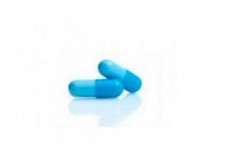Medical expert of the article
New publications
Preparations
Azinox
Last reviewed: 03.07.2025

All iLive content is medically reviewed or fact checked to ensure as much factual accuracy as possible.
We have strict sourcing guidelines and only link to reputable media sites, academic research institutions and, whenever possible, medically peer reviewed studies. Note that the numbers in parentheses ([1], [2], etc.) are clickable links to these studies.
If you feel that any of our content is inaccurate, out-of-date, or otherwise questionable, please select it and press Ctrl + Enter.

Indications Azinoxa
It is used for bilharziasis (this also includes pathologies of the urogenital system and intestines), opisthorchiasis, paragonimiasis with clonorchiasis, as well as metagonimiasis with fasciolopsiasis, and other trematodoses caused by helminths sensitive to the drug.
It is also used for intestinal cestodiasis: dwarf tapeworm, dibotriocephalosis, beef tapeworm and teniasis. It is also used to treat neurocysticercosis.
Release form
Available in tablets - 10 pieces inside a blister. In a package of 1, 2 or 3 blister plates. Also 12 or 20 tablets inside a jar. In a separate pack - 1 jar with tablets.
 [ 5 ]
[ 5 ]
Pharmacodynamics
The drug has a wide range of action, which includes many cestodes and trematodes. The substance praziquantel exhibits powerful activity against any microbes dangerous to humans, causing bilharziasis, clonorchiasis with opisthorchiasis and paragonimiasis, and also affects Hetorophyes heterophyes and Fasciolopsis buski with Metagonimus yokogawai (flukes acting in the intestines).
The liver fluke (among trematodes) is resistant to the active component of the drug, but it was not possible to identify the mechanism of this resistance. Praziquantel is very active against bacteria that cause cestodiasis inside the intestine: dwarf tapeworm (hymenolepiasis), broad tapeworm (diphyllobothriasis), beef tapeworm (taeniarhynchosis) and pork tapeworm (taeniasis), and in addition to this, against cysticerci.
Praziquantel has two main effects on helminths sensitive to the substance. Small doses of the drug stimulate muscle activity, which then turns into muscle contraction and central paralysis. More significant doses of the drug damage the tegument (the outer shell of Platyhelminthes). How this effect is achieved has not yet been determined. There are suggestions that the properties of praziquantel are due to the fact that it can increase membrane permeability for calcium ions (and certain other 1-valent and 2-valent cations).
Pharmacokinetics
Absorption of the drug from the gastrointestinal tract is complete and rapid; the substance reaches its peak value after 1-3 hours. It is synthesized with plasma protein by 80%.
It undergoes hepatic metabolism, resulting in the formation of inactive decay products (mono- and polyhydroxylated). The half-life is 0.8-1.5 hours (praziquantel), and 4-6 hours (decay products of the active component).
Most of the drug is excreted via the kidneys (80% of the substance; within 4 days), mainly in the form of decay products: 90% is excreted within 24 hours. A small part of the drug is excreted with feces. A small amount of the substance also passes into breast milk.
When kidney function is impaired, excretion slows down.
In case of problems with liver function, the intensity of metabolic processes decreases, as a result of which the active component in unchanged form remains in the body for a long period. As a result, the concentration of praziquantel in the body increases.
Dosing and administration
The dose sizes are prescribed taking into account the type of causative bacteria. A single dose is 10-50 mg/kg. The tablets are taken according to specially selected schemes.
 [ 6 ]
[ 6 ]
Use Azinoxa during pregnancy
It is prohibited to take the medicine in the 1st trimester, as well as during lactation. In the 2nd and 3rd trimesters, Azinox can be used only if there are strict indications.
If you need to take the medicine during lactation, you should stop breastfeeding during treatment with praziquantel (on the day of taking the tablet, as well as during the next 72 hours).
Contraindications
Main contraindications:
- presence of hypersensitivity to praziquantel;
- ocular or hepatic cysticercosis;
- liver failure;
- children under 4 years of age.
Side effects Azinoxa
Taking the medicine may provoke the development of the following side effects:
- manifestations from the PNS and CNS: dizziness or headaches, myalgia and drowsiness. During the treatment of neurocysticercosis, mental disorders, signs of meningism may occur, and in addition, hyperthermia may develop and the level of intracranial pressure may increase;
- reactions of the gastrointestinal tract: vomiting, abdominal pain and nausea; occasionally, a transient increase in liver transaminase levels may be observed;
- Allergic reactions: occasionally a skin rash or fever may develop.
Storage conditions
Azinox is kept in a place protected from sunlight and moisture. Temperature indicators are within the range of -10/+25 o C.
Shelf life
Azinox is permitted to be used for a period of 3 years from the date of release of the tablets.
Attention!
To simplify the perception of information, this instruction for use of the drug "Azinox" translated and presented in a special form on the basis of the official instructions for medical use of the drug. Before use read the annotation that came directly to medicines.
Description provided for informational purposes and is not a guide to self-healing. The need for this drug, the purpose of the treatment regimen, methods and dose of the drug is determined solely by the attending physician. Self-medication is dangerous for your health.

